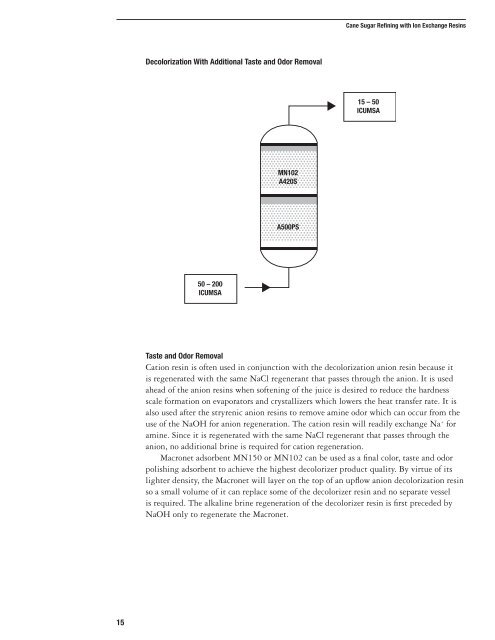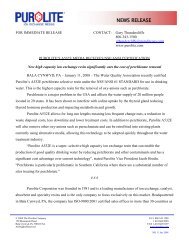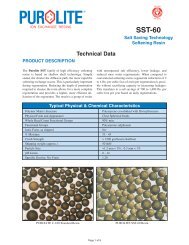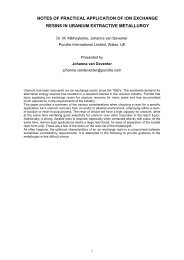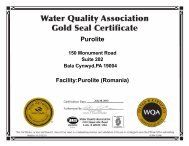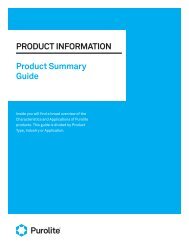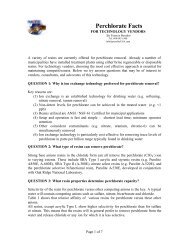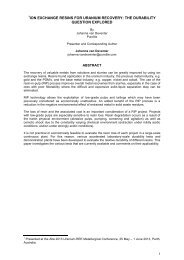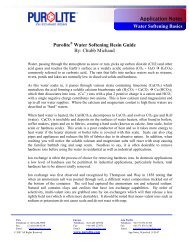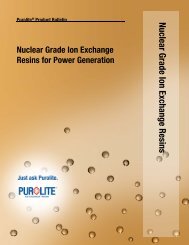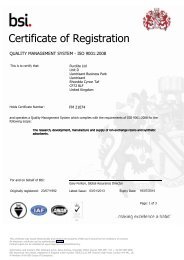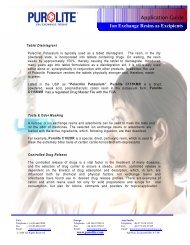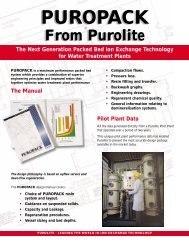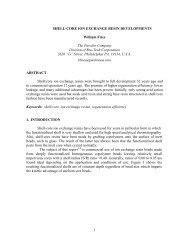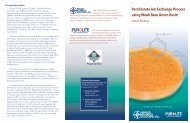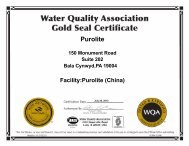Cane Sugar Refining - Purolite
Cane Sugar Refining - Purolite
Cane Sugar Refining - Purolite
You also want an ePaper? Increase the reach of your titles
YUMPU automatically turns print PDFs into web optimized ePapers that Google loves.
15<br />
Decolorization With Additional Taste and Odor Removal<br />
50 – 200<br />
ICUMSA<br />
MN102<br />
A420S<br />
A500PS<br />
<strong>Cane</strong> <strong>Sugar</strong> <strong>Refining</strong> with Ion Exchange Resins<br />
15 – 50<br />
ICUMSA<br />
Taste and Odor Removal<br />
Cation resin is often used in conjunction with the decolorization anion resin because it<br />
is regenerated with the same NaCl regenerant that passes through the anion. It is used<br />
ahead of the anion resins when softening of the juice is desired to reduce the hardness<br />
scale formation on evaporators and crystallizers which lowers the heat transfer rate. It is<br />
also used after the stryrenic anion resins to remove amine odor which can occur from the<br />
use of the NaOH for anion regeneration. The cation resin will readily exchange Na + for<br />
amine. Since it is regenerated with the same NaCl regenerant that passes through the<br />
anion, no additional brine is required for cation regeneration.<br />
Macronet adsorbent MN150 or MN102 can be used as a final color, taste and odor<br />
polishing adsorbent to achieve the highest decolorizer product quality. By virtue of its<br />
lighter density, the Macronet will layer on the top of an upflow anion decolorization resin<br />
so a small volume of it can replace some of the decolorizer resin and no separate vessel<br />
is required. The alkaline brine regeneration of the decolorizer resin is first preceded by<br />
NaOH only to regenerate the Macronet.


